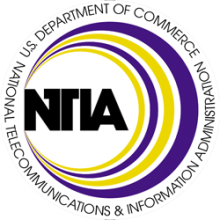Fast, affordable Internet access for all.
NTIA
Content tagged with "NTIA"
FairPoint unfairly competing with UMaine?
Even if the company was competing directly with UMS, at least Maine residents could be certain the University will even exist a year from now. But as it stands, Fairpoint isn't competing with the University of Maine. They're competing with a public private partnership of which the University is only a member. Applications for Federal funds are open to public entities and private companies. Given recent history, giving taxpayer dollars to somebody other than the regional dysfunctional incumbent might not be the worst idea in the world.Bangor Daily News argues that rural Maine cannot afford to fight over who will expand broadband access. Unfortunately, Bangor Daily News' why-can't-we-all-just-get-along approach ignores the very real damage Fairpoint has already done to the state. Their suggestion that these competing networks just "be merged" seems like a call for open access but ignores the need for Fairpoint to maximize profits (right after it gets out of bankruptcy) rather than invest in communities. The larger point is ominous: the idea that large institutions should suffer with whatever crummy service Fairpoint provides (at the high prices they will provide it) in order that Fairpoint can expand its poor DSL service to rural areas, misses the important point that Fairpoint cannot and will not offer the services that Maine needs. As Mayor Joey Durel of Lafayette suggested, maybe Maine should just send its jobs down to Lafayette, where they are building the necessary infrastructure for the future.
Stimulus Updates
NTIA head Larry Strickling has suggested that if an incumbent wants to veto a stimulus grant in its territory, the data it uses to show the area is served will be on the public record. As this is a step in the direction of making such information public, it is good. However, there is still no clear method of appealing such a veto.
Craig Settles has called for letters to the NTIA asking for a deadline extension for the first round of grant applications. Muniwireless.com published a commentary explaining why a delay is a good idea.
West Virginia, one of the most-underserved states by broadband providers, is starting to worry much of the state may not qualify for broadband funds according to the Charleston Daily Mail. Unfortunately, they are relying on data from the industry-backed Connected Nation operation, so who knows? Being so heavily influenced by incumbents, Connected Nation significantly overstates existing coverage.
However, the story is interesting in pointing out that the approach taken by NTIA will not result in sustainable network. Because network deployers must stick to the areas of least density, they have no revenue base with which to cover operating costs. Once the stimulus money goes away, one wonders how many of these networks will fold -- though NTIA has claimed that networks must demonstrate fiscal viability after the grants run out.
How NTIA Dismantled the Public Interest Provisions of the Broadband Stimulus Package
Creating the Broadband Stimulus Language
The debate began in Congress as the House and Senate drafted broadband plans as part of the American Recovery and Reinvestment Act The House language on eligibility for stimulus grants made little distinction between global, private entities and local public or non-profit entities.the term `eligible entity' means--The Senate language clearly preferred non-profit or public ownership.(A) a provider of wireless voice service, advanced wireless broadband service, basic broadband service, or advanced broadband service, including a satellite carrier that provides any such service; (B) a State or unit of local government, or agency or instrumentality thereof, that is or intends to be a provider of any such service; and (C) any other entity, including construction companies, tower companies, backhaul companies, or other service providers, that the NTIA authorizes by rule to participate in the programs under this section, if such other entity is required to provide access to the supported infrastructure on a neutral, reasonable basis to maximize use;
To be eligible for a grant under the program an applicant shall—The final language, adopted by the Conference Committee and passed by both houses in February was a compromise. It favored a public or non-profit corporation but allowed a private company to be eligible only if the Assistant Secretary of the Department of Commerce found that to be in the public interest.(A) be a State or political subdivision thereof, a nonprofit foundation, corporation, institution or association, Indian tribe, Native Hawaiian organization, or other non-governmental entity in partnership with a State or political subdivision thereof, Indian tribe, or Native Hawaiian organization if the Assistant Secretary determines the partnership consistent with the purposes this section
NOFA Reactions: a Mini Round Up to Broadband Stimulus Rules
This means networks that offer competitive pricing from more than one provider get preference--this is huge, and could have important long term consequences. The rules also do something else quite important on the same page (page 66, line 1463), where there is explicit preference for open access transport, which in telecom jargon is "interconnection." The rules say that companies that post their interconnection fees publicly and agree to nondiscrimination will get preference.If he is correct, the implications are great. However, the rules certainly could have demanded open access as a condition of public money being used rather than a limited form of extra credit for those who will encourage competition in a market suffering the utter lack of it. Harold Feld, who rightly noted that good people struggled and worked on this, saw both positives and negatives in the rules. He defends the "broadband" speed definition from the FCC (768kbps down and 200kbps up):
I am in the minority in thinking they played this right.




